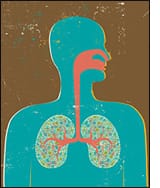The emergence of new viral outbreaks often triggers public concern, particularly in the wake of the COVID-19 pandemic, which has profoundly affected global health and economies. Recently, China has reported an outbreak of Human Metapneumovirus (HMPV), prompting inquiries regarding the virus’s nature, its similarities to COVID-19, and the potential for vaccination.
HMPV was first identified in the late 1990s and is known to cause respiratory infections, particularly in children, the elderly, and immunocompromised individuals. It is classified as a member of the Paramyxoviridae family, which also includes other viruses such as respiratory syncytial virus (RSV) and parainfluenza viruses. While HMPV is not a newly discovered virus, its recent surge in cases in China has brought it back into the spotlight.
The symptoms of HMPV infection can resemble those of other respiratory viruses, including COVID-19. Common symptoms include fever, cough, nasal congestion, and wheezing. In severe cases, HMPV can lead to bronchiolitis or pneumonia, particularly in vulnerable populations. This overlap in symptoms raises concerns about the potential for misdiagnosis, especially in regions still grappling with COVID-19.
One of the critical aspects of understanding HMPV lies in its mode of transmission. Like COVID-19, HMPV spreads through respiratory droplets when an infected person coughs or sneezes. It can also survive on surfaces for a limited time, contributing to its spread in community settings. This similarity in transmission dynamics underscores the importance of public health measures, such as hand hygiene and respiratory etiquette, in controlling outbreaks of both viruses.
Despite these similarities, there are notable differences between HMPV and COVID-19. The most significant distinction is the level of severity associated with each virus. While COVID-19 can lead to severe respiratory distress and has a higher mortality rate, HMPV typically results in milder respiratory illness, particularly in healthy individuals. However, the risk of severe disease remains for certain populations, necessitating vigilance and appropriate healthcare responses.
As the outbreak of HMPV unfolds in China, questions regarding vaccination have emerged. Currently, there is no specific vaccine available for HMPV. Research is ongoing to develop effective vaccines and treatments, but progress has been limited. In contrast, the rapid development and deployment of COVID-19 vaccines have provided a critical tool in managing that pandemic. The absence of an HMPV vaccine highlights the need for continued research and investment in vaccine development for respiratory viruses.
Public health authorities in China are closely monitoring the HMPV outbreak and implementing measures to mitigate its spread. These measures include increased surveillance, public awareness campaigns, and recommendations for individuals exhibiting respiratory symptoms to seek medical attention promptly. The response to the HMPV outbreak is informed by lessons learned during the COVID-19 pandemic, emphasizing the importance of rapid response and community engagement in controlling viral spread.
In conclusion, the recent outbreak of HMPV in China serves as a reminder of the ongoing challenges posed by respiratory viruses. While HMPV is not a new virus, its resurgence raises important questions about public health preparedness, the need for effective vaccines, and the importance of clear communication to prevent misinformation. As research continues, understanding the characteristics of HMPV and its implications for public health will be crucial in managing current and future outbreaks.



